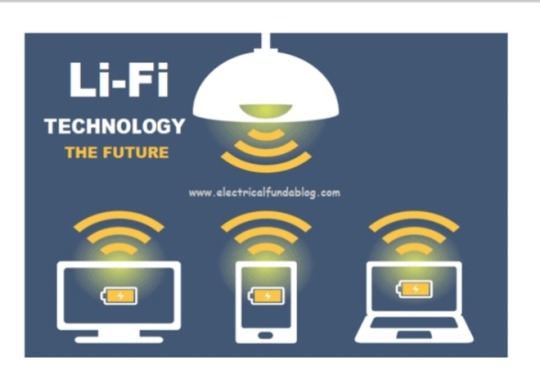Don't wanna be here? Send us removal request.
Text
"Lighting the Path: Unveiling the Brilliance of Visible Light Communication"
In the realm of wireless communication, a fascinating technology is emerging, shedding light on new possibilities—quite literally. Visible Light Communication (VLC) is revolutionizing the way we transmit data, using the visible spectrum of light to transfer information at remarkable speeds.
The Basics of Visible Light Communication
VLC operates by modulating the intensity of light signals emitted by LED sources. These light signals, imperceptible to the human eye, can transmit data when received by a photosensitive receiver. The core advantage of VLC lies in its ability to leverage existing lighting infrastructure for dual purposes—illumination and communication.

Speed and Efficiency
One of the key strengths of VLC is its speed. With data rates reaching gigabits per second, VLC outpaces traditional Wi-Fi in certain scenarios. The high-frequency nature of visible light allows for quick and efficient data transfer, making it ideal for environments where rapid communication is crucial.
Applications in Indoor Navigation
VLC is finding practical applications in indoor navigation systems. By embedding VLC technology in lighting fixtures, locations like airports, shopping malls, and museums can offer precise navigation information to users through their smartphones. This not only enhances user experience but also opens up new possibilities for location-based services.
Li-Fi: The Future of Wireless Connectivity
Li-Fi, a specific application of VLC, has gained attention as a potential successor to traditional Wi-Fi. Operating on the same principles as VLC, Li-Fi boasts higher data transfer speeds and enhanced security. As more devices become equipped with Li-Fi capabilities, we may witness a paradigm shift in how we connect to the internet.
Overcoming Challenges
While VLC presents exciting prospects, challenges such as signal interference and limited range in outdoor environments remain. Researchers are actively addressing these issues to unlock the full potential of VLC for widespread adoption.
VLC in Defense
Visible Light Communication (VLC) holds significant promise in defense applications, offering unique advantages in terms of security, data transfer speed, and versatility.
Secure Communication
Security is paramount in defense applications, and VLC provides an additional layer of protection. Unlike traditional radio frequency communication, VLC operates within the visible light spectrum, making it less susceptible to eavesdropping and external interference. This inherent security feature makes it an attractive option for transmitting sensitive information in military operations and secure communication channels.
Covert Operations
VLC's use of visible light allows for covert communication in situations where radio frequency signals might be detectable. By leveraging light signals, military personnel can establish communication links without revealing their positions through electromagnetic emissions. This capability is particularly valuable in stealth operations and tactical scenarios.
Immune to Electromagnetic Jamming
VLC is immune to electromagnetic jamming, a common tactic used in electronic warfare. In military operations, adversaries often attempt to disrupt communication systems by jamming radio frequencies. VLC's reliance on visible light signals renders it impervious to these jamming techniques, ensuring reliable communication channels even in hostile environments.
Rapid Data Transfer for Surveillance
In defense applications, timely and secure data transfer is crucial, especially in surveillance and reconnaissance missions. VLC's high-speed data transfer capabilities allow for quick transmission of large volumes of data, such as high-resolution images and video feeds. This is invaluable for real-time decision-making and situational awareness on the battlefield.
Indoor Navigation and Communication in Confined Spaces
VLC can be particularly beneficial in indoor environments where GPS signals may be weak or unavailable. Defense personnel operating in confined spaces, such as bunkers or underground facilities, can utilize VLC for navigation and communication. This ensures seamless connectivity and coordination in areas where traditional communication methods may face challenges.
Integration with Existing Infrastructure
The military often operates in diverse environments, and VLC's adaptability to existing lighting infrastructure makes it a practical choice. Military installations, bases, and vehicles equipped with VLC-compatible lighting systems can establish communication links seamlessly, enhancing overall operational efficiency.
In conclusion, Visible Light Communication in defense applications offers a secure, covert, and reliable communication solution. As technology continues to advance, integrating VLC into military communication strategies has the potential to significantly enhance the capabilities of defense forces in various operational scenarios.
Visible Light Communication is not just a bright idea; it's a technology with the potential to reshape our connectivity landscape. From faster data transfer to enhanced indoor navigation, VLC is paving the way for a future where light serves as more than just illumination. As researchers continue to refine and expand its capabilities, VLC stands poised to illuminate our path toward a more connected and efficient world.
2 notes
·
View notes